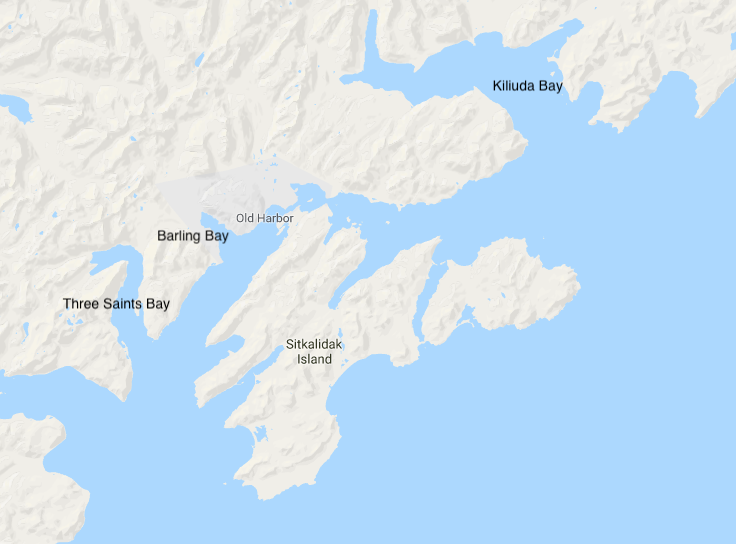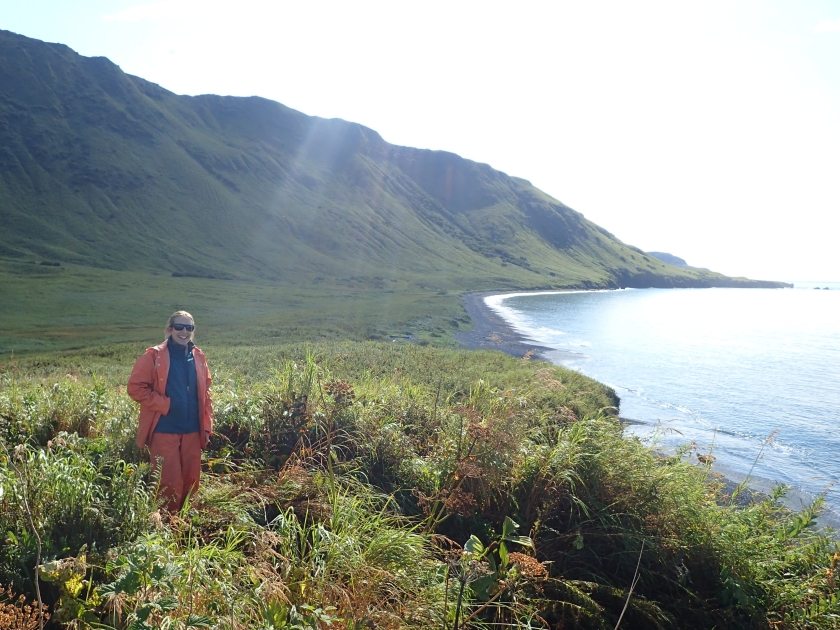On a misty morning, we boated out to Kiliuda Bay, located to the northeast of Old Harbor. There are numerous archaeological sites in Kiliuda Bay, but we were just interested in one – a site that was occupied from before Russian contact through the late 1830s. In the literature it is usually referred to as simply ‘the Kiliuda site’. This site was visited by Russian explorer Urey Lisiansky in 1805 and is mentioned in Church records through the 1830s when the village was depopulated following a smallpox epidemic. After this epidemic, the Russian American Company purposely consolidated the remaining Kodiak Archipelago population into seven villages, leaving many sites, such as Kiliuda, abandoned. These seven consolidated villages were the forerunners of the modern towns and villages on Kodiak today.

When we got to the Kiliuda site, the whole area was shrouded in a thick fog, but thankfully it soon lifted so that we could take in the beautiful surroundings! The site has a great vantage point to see both deeper into the bay and out to Sitkalidak Island – I can see why people would want to live here! There is also a calm cove around the corner from the site, which would be useful for coming and going by boat (in fact, we moored our boat there).


At this site, we opted not to probe the subsurface with the auger or soil probe because it was quite obvious from pedestrian survey that the site was well preserved. We found several large and deep house pits in a line along the shore in addition to an extensive midden deposit. A distinguishing feature of this site was the plethora of sea mammal and fish bones right along the beach. Some of these likely eroded out of the archaeological site, but others were probably more recent and naturally deposited on the beach by waves. Having such good preservation on the surface is an indicator that more bones will be preserved in the midden itself. By studying the bones of animals that people left behind, we can learn a lot about their diet, food preparation and skin processing – and how those might have changed during the new colonial situation.

We recorded the locations of the houses and middens and then took drone footage of the site, which should help us identify more features on the surface. This site is a good candidate for excavation due to its preservation and age. It could help tell the story of communities that were already in existence at the time of Russian contact and how they responded to newly imposed demands while maintaining their original settlement location.

